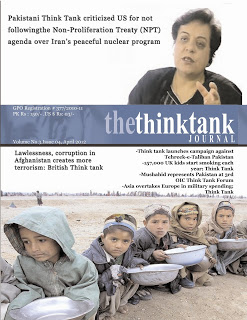Drummondville, QC has emerged as the most stressed-out city in Canada, according to a recent burnout index compiled by CasinooftheKings. With a burnout score of 99, nearly 29% of its residents report fair or poor mental health—the highest rate in the country. But Drummondville is far from alone: the study reveals that stress and burnout are widespread and rising, driven largely by worsening economic conditions, rising cost of living, and declining mental health across multiple provinces.
Ontario: Ground Zero for Burnout
Ontario stands out for all the wrong reasons. Five of its cities—Windsor, Peterborough, Kingston, St. Catharines–Niagara, and Belleville–Quinte West—feature in the top ten most burned-out municipalities. Windsor holds the second-highest burnout score at 83, with 30.45% of residents reporting high life stress, the highest in Canada. The city’s 10.8% unemployment rate far exceeds the national average of 6.1% (Statistics Canada, 2024), painting a stark picture of job insecurity.
Peterborough fares even worse on the jobs front, with 11.7% of its population unemployed—the highest in the study. Meanwhile, Kingston’s moderate unemployment is offset by 26.8% of its population reporting high life stress and average commuting times that, while not extreme, accumulate stress over time.
This Ontario cluster raises a policy red flag: despite decent median incomes (ranging from $77K to $83K), stress remains stubbornly high. The likely culprits are high costs of living, precarious employment, and rising personal debt, the latter of which hit a national average of $1.85 per dollar of disposable income in 2024, according to the Bank of Canada.

Quebec’s Drummondville: A Mental Health Crisis Unfolding
Drummondville’s stress profile differs in key ways. It has one of the lowest median household incomes ($64K) and a relatively low cost of living ($1.39K/month). However, it leads the nation in self-reported poor mental health (28.64%).
This discrepancy highlights that stress is not only an economic phenomenon, but also a public health one. Dr. Pierre Leclerc, a sociologist at Université de Montréal, attributes the region’s challenges to underfunded mental health infrastructure and reduced access to psychological services in rural and mid-sized cities. “Mental health is a structural issue,” he notes. “We’re seeing the compounding effects of isolation, poverty, and stagnant wages manifest as mental illness and burnout.”
Atlantic Strains: Economic Disparities and Regional Neglect
In New Brunswick, Saint John and Moncton report burnout scores of 41 and 39, respectively. Though less severe than Ontario’s worst-hit cities, the Atlantic region’s struggles remain pronounced. Long commute times (25.6 minutes average) and lower household incomes ($74K–$74.5K) suggest that residents are feeling the weight of underdevelopment and limited opportunities.
Statistics Canada data supports this trend: the Atlantic provinces have persistently higher unemployment and outmigration rates than the national average. Youth especially are leaving these regions in search of better economic prospects, hollowing out the labor base and further depressing local economies.
British Columbia: Long Commutes, High Costs, Hidden Burnout
Out west, Abbotsford–Mission and Kelowna rank ninth and tenth in burnout, respectively. While they boast higher median incomes ($85K–$91K), their commute times (30.5 minutes) and housing costs tell a different story. According to CMHC’s 2024 report, B.C. remains Canada’s least affordable housing market, with home prices and rents rising faster than incomes.
The stress in these cities reflects what economist Armine Yalnizyan calls “middle-class squeeze”—where rising costs outpace wage growth, creating constant pressure even for seemingly comfortable earners. About 1 in 5 residents in both cities report high stress levels, despite their higher earnings.
The National Picture: A Tipping Point
A broader trend emerging from the data is that 40% of Canadians say their stress has increased compared to last year. This suggests a nationwide burnout problem fueled by persistent structural factors:
Stagnant real wages: According to a 2024 report from the Canadian Centre for Policy Alternatives (CCPA), median real wages in Canada have grown only 0.3% annually over the last decade.
Housing affordability crisis: With rent increases averaging 6% per year and mortgage costs up by 12% year-over-year, housing remains the single largest contributor to financial stress.
Erosion of public healthcare and mental health access: A 2023 survey by the Canadian Mental Health Association (CMHA) revealed that only 1 in 3 Canadians who needed mental health services received timely help.
Political Economy Lens: What This Means for Policy
The data underscores a growing disconnect between economic policy frameworks and the lived experiences of Canadians. While GDP and employment numbers might show recovery, quality of life metrics—especially mental health and financial well-being—are deteriorating.
Current government approaches to stress and mental health remain largely reactive and individualized—offering tax credits for therapy or workplace wellness initiatives—rather than addressing the root causes: unstable employment, rising inequality, and unaffordable housing.
To respond meaningfully, experts suggest:
Rebalancing provincial transfer payments to help underfunded regions like Atlantic Canada and smaller Quebec cities.
Expanding public mental health infrastructure through universal access models, particularly in non-urban areas.
Investing in affordable housing with federal leadership, akin to postwar housing strategies that built public stock rather than subsidizing private markets.
Targeting youth unemployment through green economy apprenticeships and technology-sector retraining programs.
A Nation at a Crossroads
Burnout is more than an individual condition—it’s a societal barometer. The findings from Drummondville to Kelowna indicate a stress pandemic that mirrors Canada’s growing socioeconomic divides. If left unaddressed, these trends risk hardening into structural inequalities with long-term consequences for productivity, public health, and social cohesion.
As policymakers debate tax reforms and interest rates, they must also confront a harder truth: Canada’s economy may be growing, but its people are burning out.
Sources:
- StatCan Labour Force Survey, 2024
- Canadian Mental Health Association (CMHA) Mental Health Index, 2023
- Canadian Centre for Policy Alternatives (CCPA), 2024 Economic Inequality Report
- Canada Mortgage and Housing Corporation (CMHC), 2024 Housing Market Insight
- Most Burned-Out Cities in Canada (2025)



